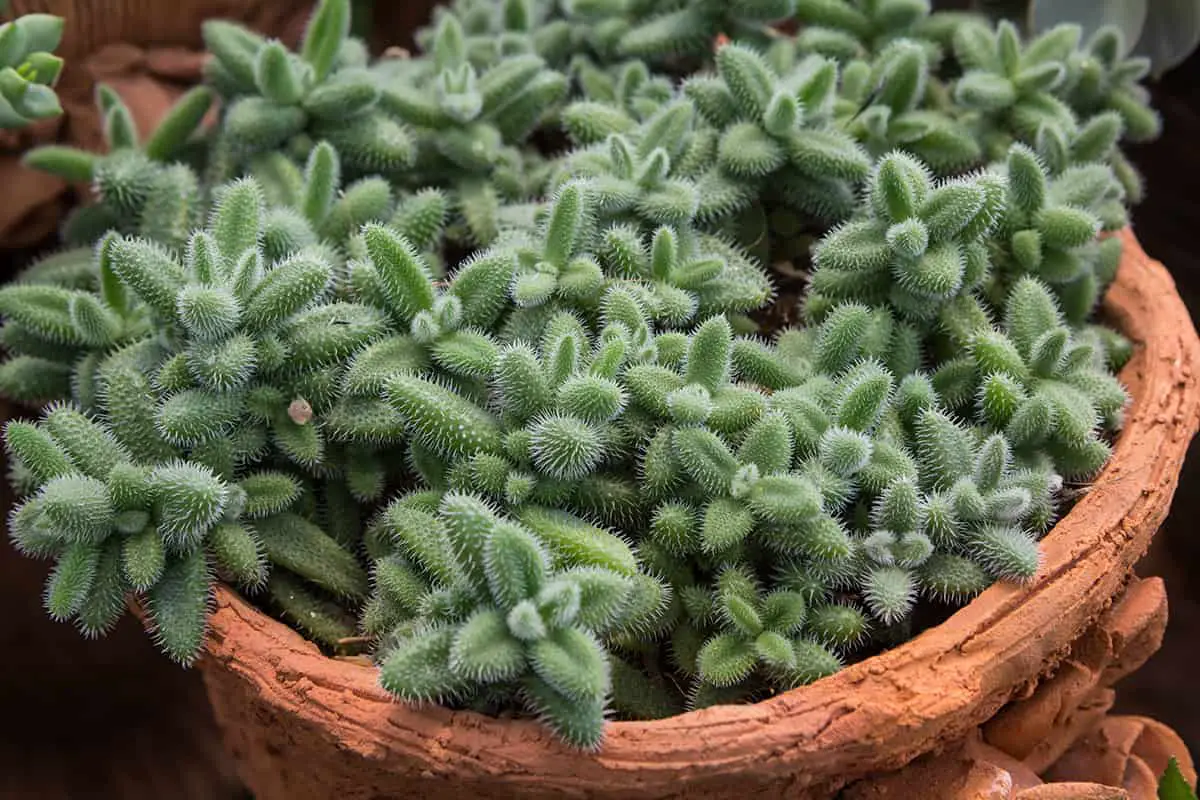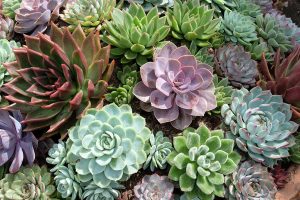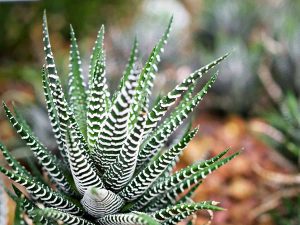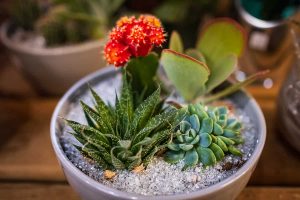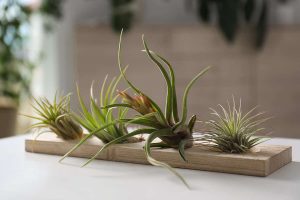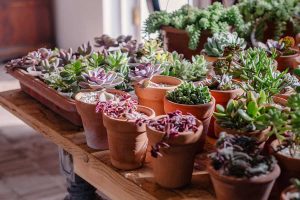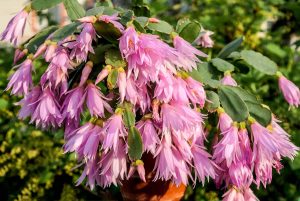Caring for the quirky pickle plant is quite simple. With a few basic steps, your plant will thrive. These succulents, known as Delosperma echinatum, are easy to maintain and can make a unique addition to any indoor garden.
Begin by selecting the right container and potting mix. Drainage is essential to prevent root rot. Your pot should have holes to allow excess water to escape, and use a well-draining, succulent-specific potting mix.
Providing the proper lighting is key to your plant’s success. The pickle plant enjoys bright, indirect sunlight. Keep it near a window where it can receive adequate sunlight, but avoid scorching its leaves.
Table of Contents
Pickle Plant Overview
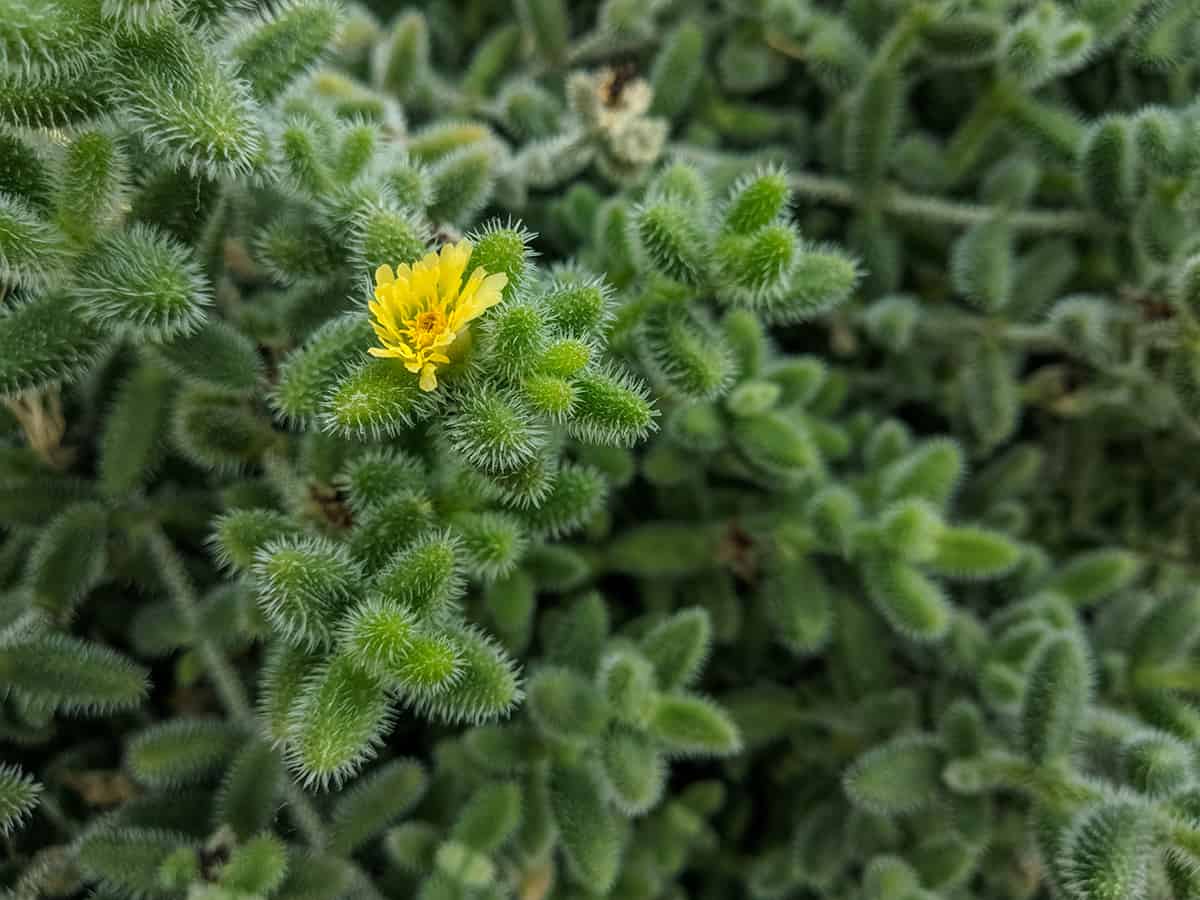
The Pickle Plant (Delosperma echinatum) has cylindrical, green, succulent leaves covered in harmless, soft spines. Its leaves can grow up to 2 inches long. This plant can bloom small, vibrant, daisy-like flowers in a vivid shade of yellow. The blooming usually occurs during spring and summer. Here is a quick table that summarizes further details of the plant.
| Common Name | Pickle Plant |
| Botanical Name | Delosperma echinatum |
| Family | Aizoaceae (Ice Plant family) |
| History & Origin | Native to South Africa, resembles tiny pickles |
| Plant Type | Succulent |
| Mature Size | Up to 2 inches long, cylindrical leaves |
| Sun Exposure | Bright, indirect sunlight |
| Soil Type | Well-draining, sandy mix |
| Soil pH | Neutral to slightly acidic |
| Temperature | Prefers 60-85°F (15-29°C) |
| Watering | Soak-and-dry method, allow soil to dry between waterings |
| Fertilizing | Monthly balanced fertilizer in growing season |
| Flower Color | Vibrant yellow, daisy-like flowers |
| Hardiness Zone | Zones 10-11, not frost-tolerant |
| Toxicity | Non-toxic to pets and humans |
| Common Problems | Pest infestations, over or underwatering |
Getting Started with the Pickle Plant
Choosing the Right Plant
When purchasing a Pickle Plant (Delosperma echinatum), choose a healthy specimen. Look for firm, plump leaves and avoid plants with visible damage or insects.
Selecting the Appropriate Soil
Pickle Plants require well-draining soil. Use a mix of 50% potting soil and 50% perlite or pumice for optimal growth. Avoid using soil that’s too moist, as it may cause root rot.
Potting Requirements
Select a pot with drainage holes to prevent excess moisture buildup. Pickle Plants thrive in pots between 6-8 inches in diameter. Keep in mind that a larger pot may lead to slower growth.
| Pot Size | Growth Rate |
|---|---|
| 6 inches | Faster Growth |
| 8 inches | Slower Growth |
Remember to use appropriate soil when repotting and water the plant sparingly, allowing the soil to dry between waterings. Turning the plant every few weeks ensures even sunlight exposure.
Caring for Your Pickle Plant
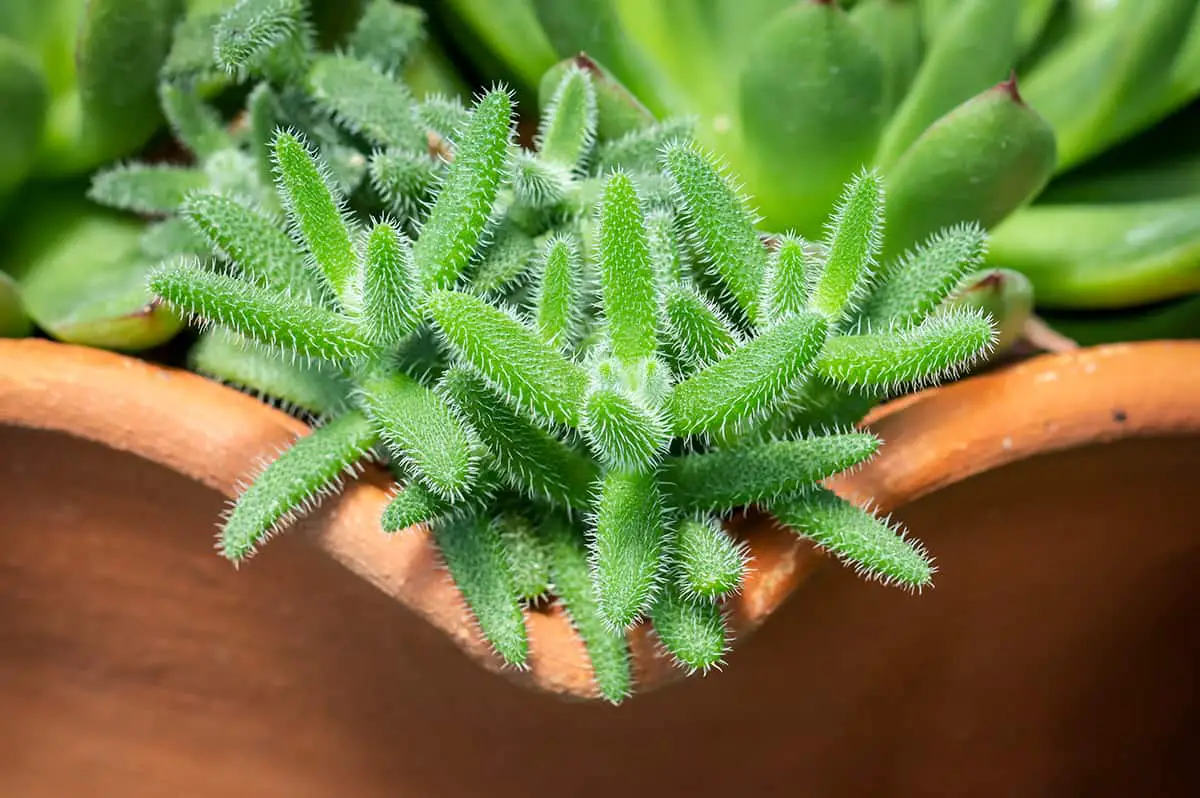
Watering
When watering your Pickle Plant, use the soak-and-dry method. Thoroughly wet the soil, then allow it to dry out completely before watering again. Overwatering can lead to root rot, so be mindful of your plant’s needs.
Create a consistent watering schedule for your plant. For most Pickle Plants, watering once every 7-10 days is a good starting point. Adjust your schedule based on your plant’s size, container, and environment.
Light and Temperature
Pickle Plants need bright, indirect sunlight throughout the day. Place your plant near a sunny window with filtered light, avoiding direct sun exposure. Too little light can cause poor growth and weak stems, while too much direct sunlight may burn the leaves.
Maintain a temperature range of 60-85°F (15-29°C) for optimal growth. Pickle Plants are sensitive to temperature changes, so avoid placing them near drafty windows or heating vents.
Fertilizing
Use a balanced, water-soluble fertilizer for your Pickle Plant every month during the growing season (spring and summer). Make sure to follow the package instructions for proper dilution rates.
During fall and winter, reduce fertilizing to once every two months. Remember that over-fertilizing can damage your plant, so it’s important to stick to the recommended schedule.
Pruning and Maintenance
Regularly inspect your Pickle Plant for signs of unhealthy growth, such as yellowing leaves or rotting stems. Remove any damaged or diseased parts using clean, sharp scissors or pruning shears.
Additionally, prune your plant to maintain its desired shape and size. Pruning also encourages bushy growth and prevents legginess. Periodically wipe the leaves with a damp cloth to remove dust and enhance photosynthesis.
Troubleshooting Common Issues
Pest Infestations
To prevent pest infestations, inspect your pickle plant regularly. Look for signs of mealybugs and aphids. If you spot them, wipe the leaves gently with a solution of water and dish soap. Neem oil can also be effective in treating pests.
Disease Prevention
Limit the chances of disease by ensuring your plant has proper drainage. Use a well-draining soil mix, such as a combination of cactus/succulent mix and perlite. Avoid overcrowding by giving each plant sufficient space, and keep the area clean by removing dead leaves and other debris.
Addressing Over or Underwatering
Pickle plants need a balance, not too wet nor too dry. Signs of overwatering include yellow leaves and root rot. If you encounter these issues, reduce the watering frequency.
To identify underwatering, check for wrinkled or shriveled leaves. If present, gradually increase your watering frequency. Keep a close eye on your plant’s appearance, adjusting your care routine as needed.
| Problems | Causes | Solutions |
|---|---|---|
| Pest Infestations | Mealybugs, aphids | Soap solution, Neem oil |
| Disease Prevention | Poor drainage, overcrowding | Well-draining soil, sufficient spacing |
| Over or Underwatering | Yellow leaves, root rot | Adjust watering frequency |
Propagation Methods
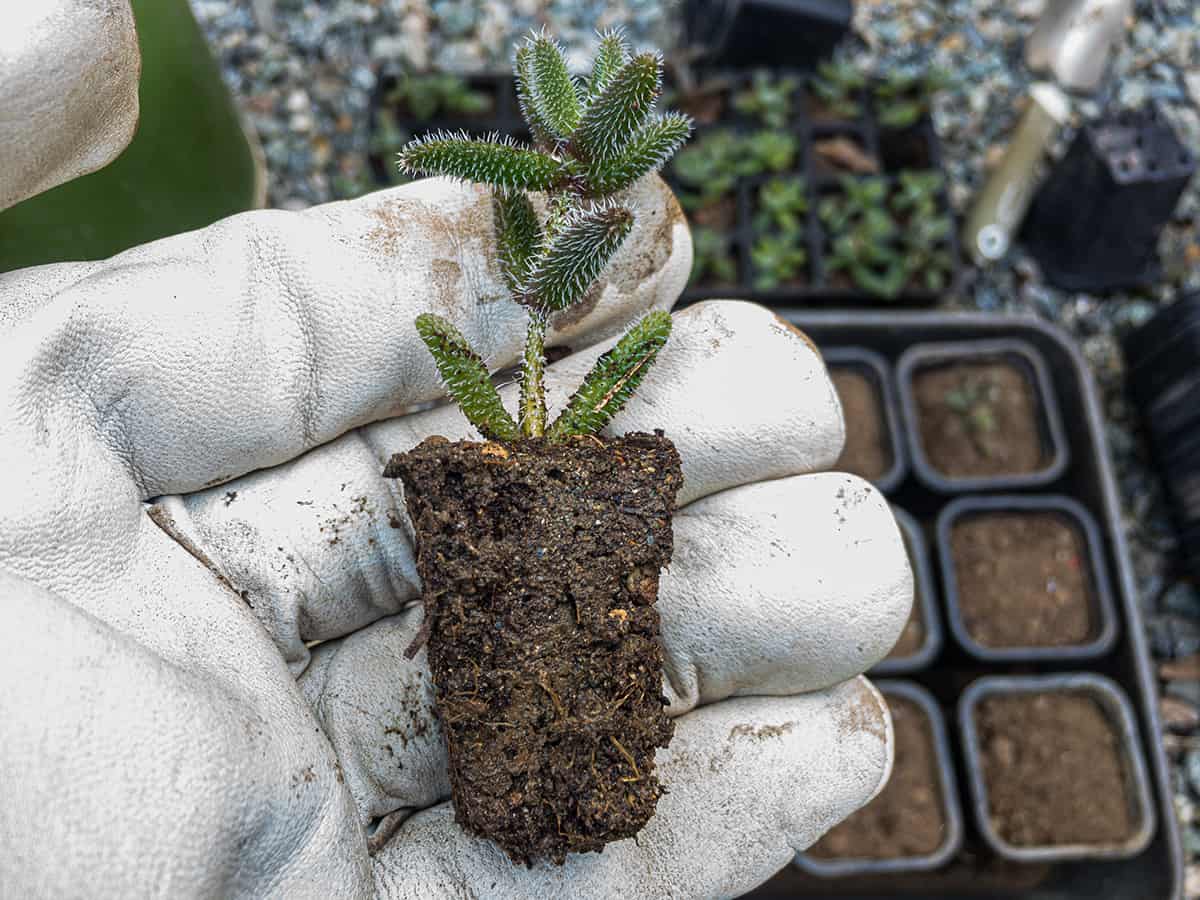
Seed Propagation
To propagate your pickle plant from seeds, gather mature seeds from an existing plant. Choose a well-draining soil mix and plant seeds about 1/4 inch deep.
Keep the soil consistently moist, but avoid over-watering. Maintain temperatures between 65-75°F (18-24 °C) for optimal germination. You should see sprouting within 2-4 weeks.
Cuttings Propagation
Take healthy cuttings from a mature pickle plant. Choose a stem with a few leaves, cutting just below a leaf node. Allow the cutting to dry for a couple of days to prevent rot.
Plant the cutting in a moist, well-draining soil mix. Ensure the cutting is upright and secure. Place it in bright, indirect light, and maintain temperatures between 70-75°F (21-24 °C).
Expect new roots to form within 3-5 weeks. Monitor the cutting’s progress by gentle tugging. Once roots have formed, move the new plant into direct sunlight to encourage growth.
Frequently Asked Questions
How often should I water my pickle plant?
Water your pickle plant every 7-10 days. Ensure the soil is dry before each watering.
What kind of soil should I use for my pickle plant?
Use well-draining soil, preferably a mixture of 50% potting soil and 50% perlite or pumice.
What type of pot should I use for my pickle plant?
Choose a pot with drainage holes. Ceramic or terracotta pots work well with this plant.
How much sunlight does my pickle plant need?
Your pickle plant needs bright, indirect light. Avoid direct sunlight, which may cause sunburn.
How do I propagate my pickle plant?
To propagate, remove a healthy leaf. Allow it to be callous for two days, then place it on well-draining soil. Mist the soil every 2-3 days.
What are the common pests of pickle plants?
Watch for mealybugs and spider mites. Treat infestations with insecticidal soap or neem oil.
When should I fertilize my pickle plant?
During active growth, fertilize your plant with a balanced succulent fertilizer every 6-8 weeks.
